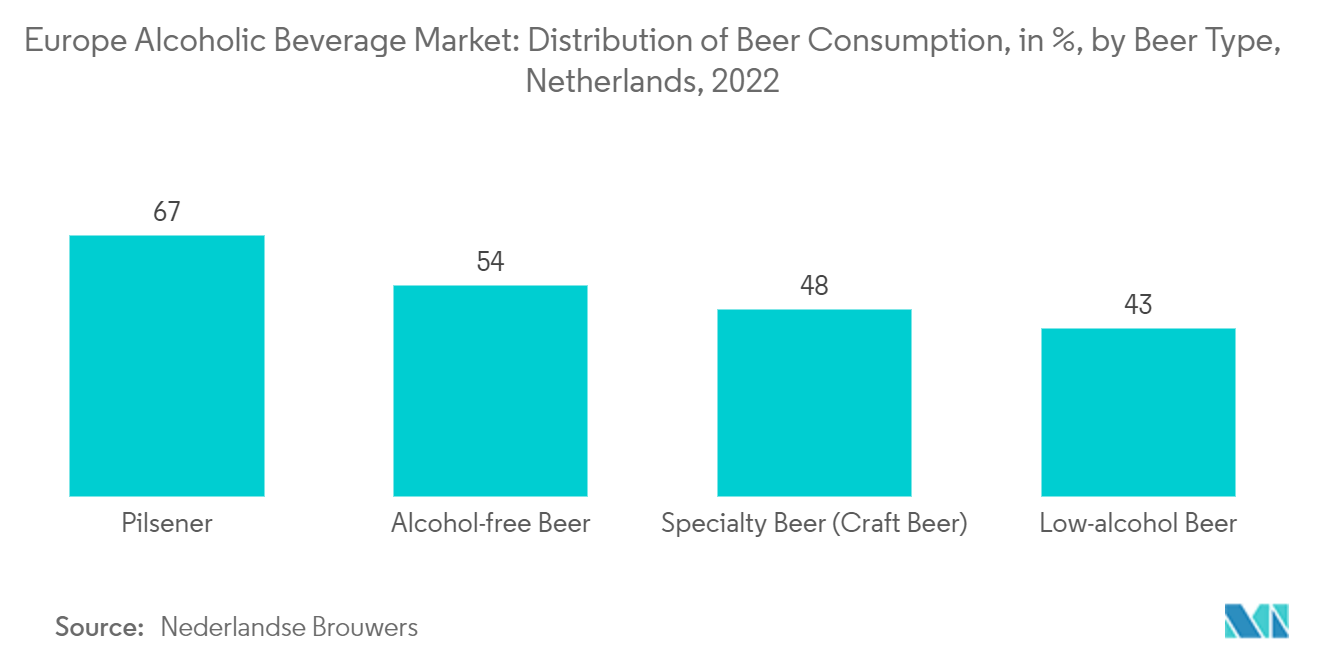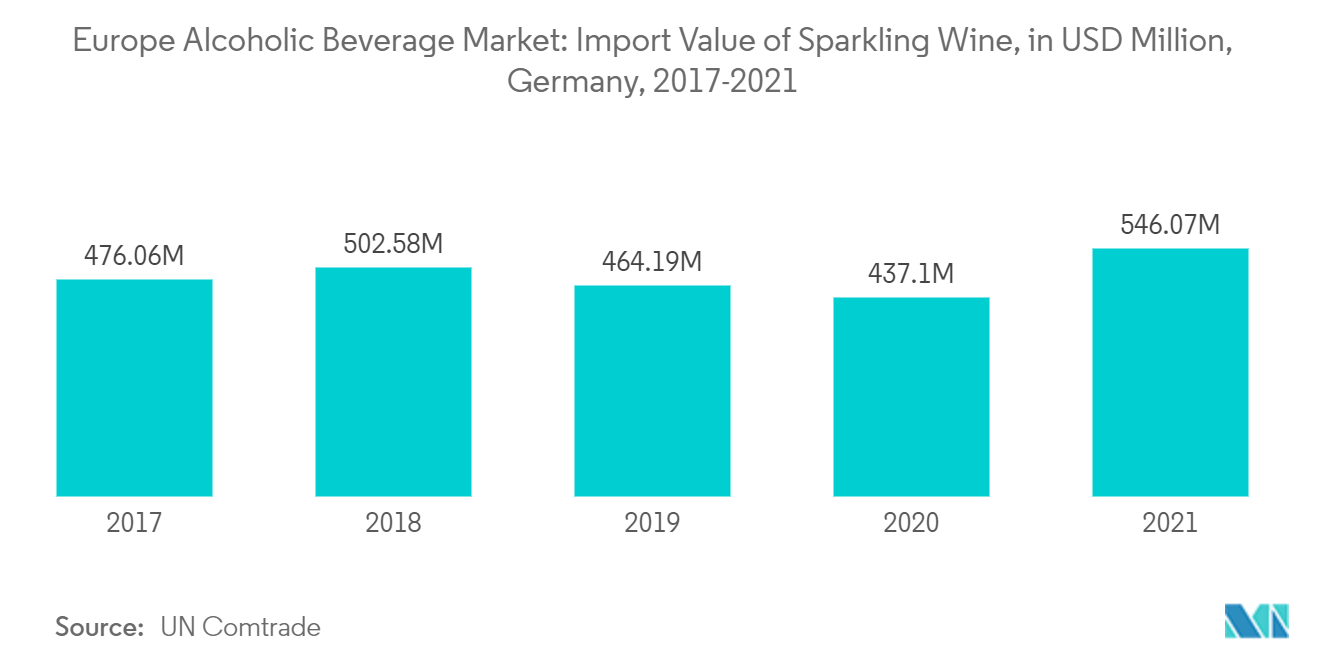Market Trends of Europe Alcoholic Beverage Industry
This section covers the major market trends shaping the Europe Alcoholic Beverage Market according to our research experts:
Increased Demand for Craft Beer
- The market growth is primarily boosted by the more significant number of millennials showing interest in craft beers, seeking a fresh and new taste, along with the soothing ambiance of the microbreweries and brewpubs. Factors such as increasing demand for beer variants, per-capita consumption, and the number of associations focused on disseminating information about different beers are expected to drive the market's growth.
- According to the Brewers of Europe, in 2020, Czechia had the highest per capita consumption of beer in Europe, with 135 liters of beer consumed, followed by Austria with 100 liters per person, Germany at 95 liters, Poland at 93 liters, and Romania at 87 liters.
- Additionally, the popularity of specialty beer (craft beer) has been on the rise. Many players have been entering the market with their product offerings specially tailored for different target groups of customers.
- According to the European Union Beer statistics, 9,500 breweries were in operation in the European Union in 2020, an increase of nearly 1,000. As of 2021, there are about 6,000 more breweries than there were in the previous year. Key players such as Anheuser-Busch In Bev are repositioning their strategies and bringing craft beers as an essential part of their growth plans to supplement the sales.

Germany Dominates the Market
- The alcoholic beverage market in Germany is driven by the long and hot summer and the various new product launches in trending categories. These factors have led to a rise in the demand for refreshing beverages, including alcoholic drinks such as sparkling wines, martinis, and other such drinks.
- The healthy lifestyle megatrend has manifested itself in different ways, including the rising demand for growth in natural wines and the increasing use of natural botanicals as gin ingredients. According to the UN Comtrade, Germany imported sparkling wine worth approximately USD 546 Million in the year 2021.
- Moreover, premiumization has taken advantage of German wine varieties, owing to increased attention toward local wine supported by the surge in domestic tourism, including in wine-growing regions such as those along the Mosel and the Rhine rivers.
- Further, this translated into a propelled demand for Pinot Gris still white wine, also known as Grauburgunder, across the region. This is one of the fastest-growing premium local wines. Furthermore, supermarkets and internet retailing are preferred because of the extended product range, including a greater range of premium and craft alcoholic drinks. The quality perception offered by supermarkets continued to persuade more consumers to be frequent this channel.


